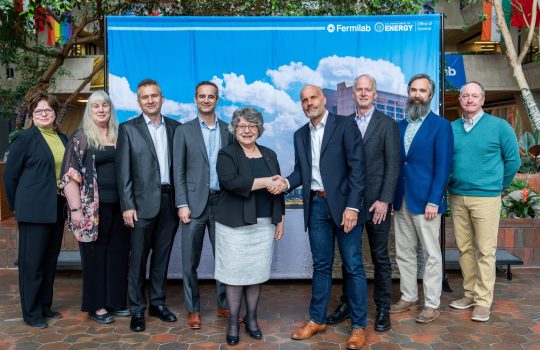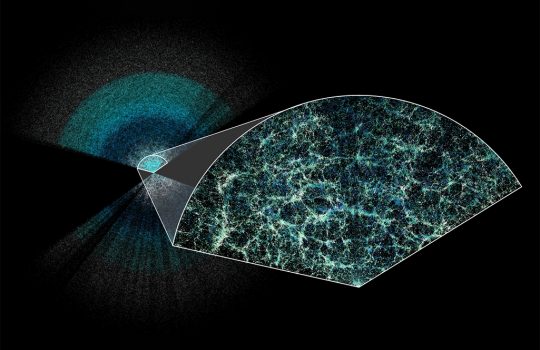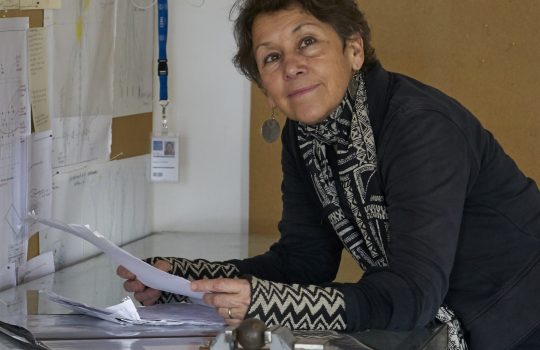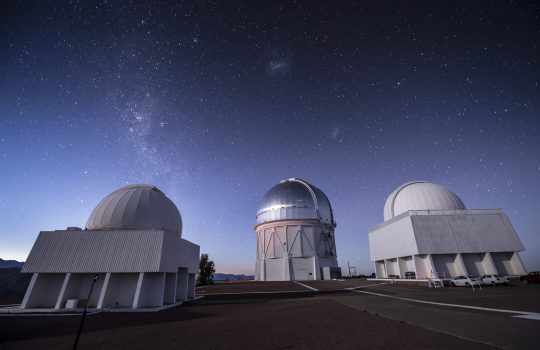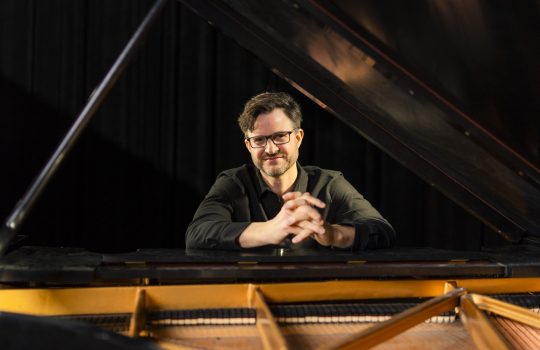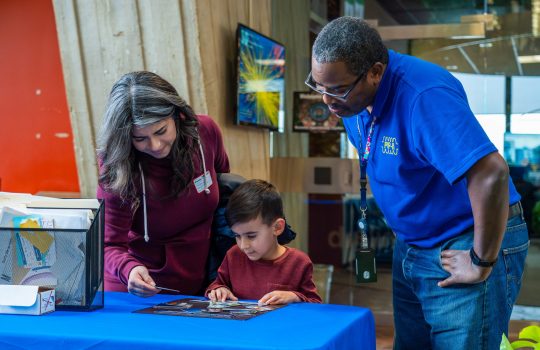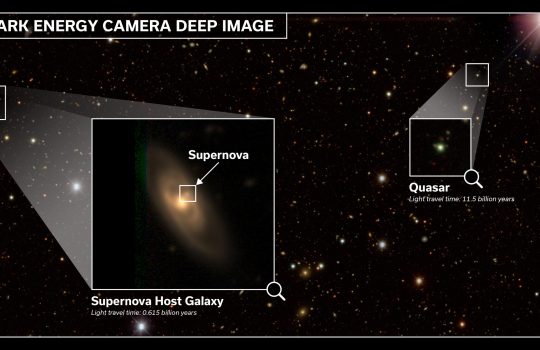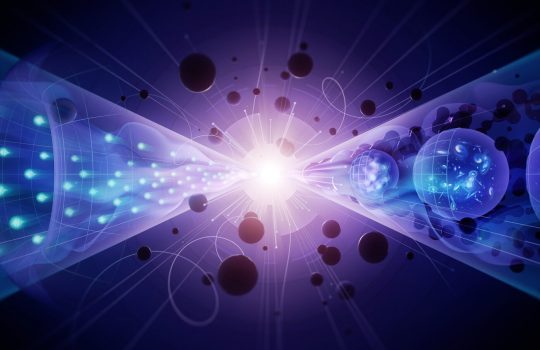New collaboration sheds bright light on advancing semiconductor production in the U.S.
A partnership between Fermilab and xLight Inc. will focus on producing advanced semiconductors in the United States using extreme ultraviolet light and accelerator technology.
First results from DESI make the most precise measurement of our expanding universe
Researchers have used the Dark Energy Spectroscopic Instrument to make the largest 3D map of our universe and world-leading measurements of dark energy, the mysterious cause of its accelerating expansion.
New media artist and educator Agnes Chavez named 2024 guest artist
New Mexico-based artist Agnes Chavez will work with scientists at Fermilab to explore new ways to use data visualization, light, sound and space to communicate the importance and relevance of science, in particular research on particles called neutrinos.
New measurement of cosmic distances in the Dark Energy Survey gives clues about the nature of dark energy
The Dark Energy Survey has measured the BAO scale when the universe was half its present age with an accuracy of 2%, the most accurate determination yet at such an early epoch. It is the first time an imaging-only measurement is competitive with large spectroscopy campaigns specifically designed to detect this signal.
Accomplished composer and pianist Mischa Zupko from Chicago named 2024 guest composer
Mischa Zupko, adjunct faculty member of the School of Music at DePaul University, will collaborate with scientists at Fermilab and members of the Chicago-based Civitas Ensemble to create music based on scientific models in particle science.
Excavation of colossal caverns for Fermilab’s DUNE experiment completed
The excavation of the caverns that will house the gigantic particle detectors of the Deep Underground Neutrino Experiment in Lead, South Dakota is complete. Final outfitting of the colossal caverns will begin soon and make way for the start of the installation of the DUNE detectors later this year.
Fermilab’s Wilson Hall open to the public
Fermilab welcomes the public back to Wilson Hall beginning January 23, to visit designated areas Monday through Friday.
Final supernova results from Dark Energy Survey offer unique insights into the expansion of the universe
In the culmination of a decade’s worth of effort, the DES collaboration of scientists analyzed an unprecedented sample of more than 1,500 supernovae classified using machine learning. They placed the strongest constraints on the expansion of the universe ever obtained with the DES supernova survey. While consistent with the current standard cosmological model, the results do not rule out a more complex theory that the density of dark energy in the universe could have varied over time.
Advisory Panel Issues Field-Defining Recommendations for U.S. Government Investments in Particle Physics Research
The 2023 P5 report represents the major activity in the field of particle physics that delivers recommendations to U.S. funding agencies.
International science organizations sign agreement to provide hardware for the Deep Underground Neutrino Experiment
- DUNE
- FAPESP
- INFN
- international collaboration
- international engagement
- particle detector technology
- STFC
- UNICAMP
On Nov. 17, representatives of funding agencies from five countries signed a memorandum of understanding, affirming their commitment to contribute to the construction of components for DUNE.

